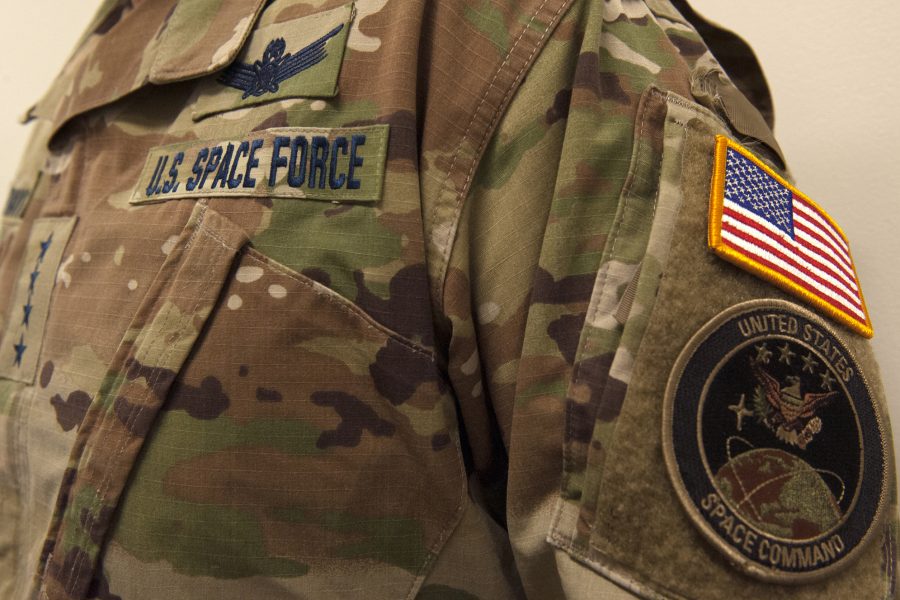The Space Force will drop the rank system it inherited from the Air Force for a new set that combines Air Force and Army names, the service said in a Jan. 29 memo to Guardians.
A Space Force spokesman confirmed the authenticity of the memo, posted on a Facebook page popular with Airmen. It’s the latest move to forge the new service’s own path forward as it tries to establish a culture separate from the Air Force it came from in December 2019.
Changes to the rank structure only affect enlisted troops, while officers will retain the same career ladder from second lieutenant to general.
Enlisted Guardians from E-1 to E-5 will be known as Specialist 1, Specialist 2, Specialist 3, Specialist 4, and Sergeant. That’s a switch from Airman Basic, Airman, Airman 1st Class, Senior Airman, and Staff Sergeant.
The Space Force said people should address troops in the first four ranks as “Specialist,” though abbreviations or the full title are also acceptable.
The enlisted system continues on to technical sergeant and then chief master sergeant. There is no command chief master sergeant on the list of new ranks. The top enlisted member will be known as Chief Master Sergeant of the Space Force (CMSSF).
While ranks will stay the same on the officer side, the Space Force has decided to call its top brass “Chief of Space Operations” and “Vice Chief of Space Operations” rather than Chief and Vice Chief of Staff as in the Air Force.
Guardians will continue wearing the same Air Force rank insignias, like the chevron patches, while the Space Force finalizes new designs “sometime in the coming months,” according to a Jan. 29 release. Troops will get to weigh in on their future insignias.
Official military documentation like forms and websites will reflect the updates beginning Feb. 1, the Space Force said in the release, cautioning that “it may take time for all systems to reflect the change.”
“There are no changes to military benefits or entitlements,” according to the service’s memo, signed by Patricia Mulcahy, the Space Force’s deputy Chief of Space Operations for personnel.
The decision comes shortly after the Space Force’s first birthday, as well as a previous announcement that the service’s members will be known as “Guardians.” As it did when picking that name, the Space Force considered crowdsourced input from the field while mulling its options for new ranks.
Congress created the Space Force during the Trump administration after years of discussion about the best way to handle new forms of aggression on orbit, such as anti-satellite missiles and signal jamming. The new service is a separate branch under the Department of the Air Force that is now in charge of training troops, buying hardware and software, and providing those resources to military commanders around the world.
Space Force missions span ballistic missile warning, GPS guidance for personnel and weapons, satellite communications, and more that have been around for years under the Air Force. Proponents say those jobs will become increasingly important and difficult as countries jockey for free rein in space.
As they searched for gender-neutral terms with more combat ethos, some instead pushed the Defense Department to adopt naval ranks—including Rep. Dan Crenshaw (R-Texas), who ultimately dropped legislation that would have required it.
Naval ranks even earned the backing of a pop culture icon who is well-versed in (fictional) space operations.
“Why not borrow back from ‘Star Trek’ and adopt our ranks as well? We took them from the Navy for good reason, even though [show creator] Gene Roddenberry was a veteran of the U.S. Army Air Corps. They made better sense when talking about a (space) ship,” William Shatner, the Canadian-born actor who played Starfleet Capt. James T. Kirk in Star Trek, said in a recent op-ed. “You should adopt the Navy ranks as they are the ones the public is most used to being heroes.”
